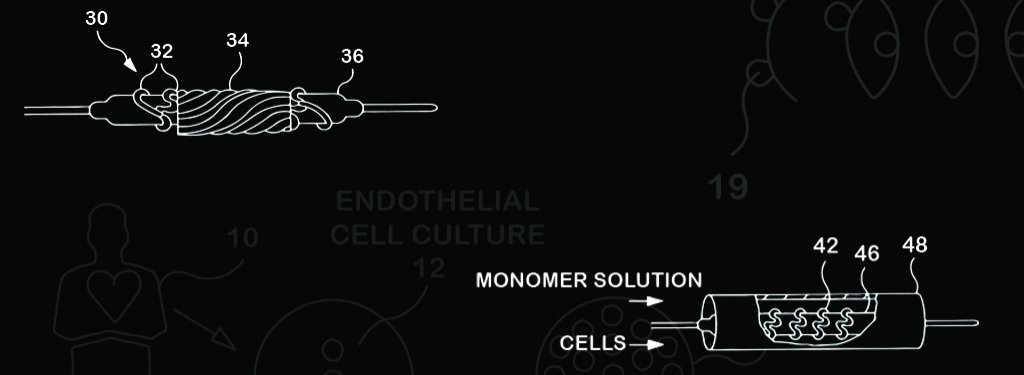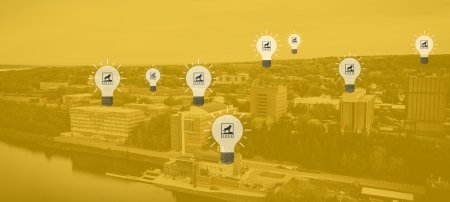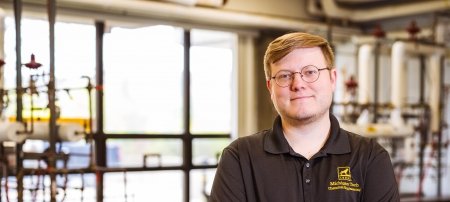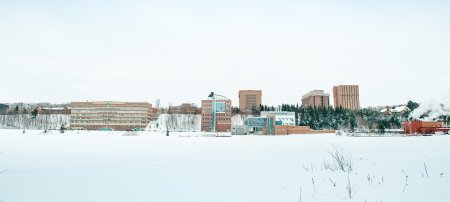Orhan Soykan wants to tell you something: “Never stop learning. Do not be afraid of tackling new challenges.”
Medical device innovator and inventor Orhan Soykan has 25 years of experience and more than 86 inventions under his belt. As a young student, he benefited from the wisdom of his teachers. Now at Michigan Tech, he is paying it forward.
Twenty-five years. Twenty-nine patents and 57 patents pending. Among all his inventions, Orhan Soykan says he is most proud of the ones at the intersection of engineering and biology: An implantable system to convert scar tissue in the cardiac muscle into contractile muscle that helps the heart to pump. Techniques and a device to enhance the production and release of natural anti-clotting agents produced by the blood vessels to prevent the recurrence of thrombotic strokes.

And his favorite: A method of isolating a small portion of a patient’s own heart muscle and converting it into a sensor to monitor levels of an anti-arrhythmic medication.
Soykan has long been associated with Michigan Tech, first as a master’s student in electrical engineering, then as an adjunct faculty member. Four years ago, after working 20 years at biomedical device powerhouse Medtronic and several more at startup YouGene, Soykan rejoined the University in a more formal way, as a professor of practice in the Department of Biomedical Engineering.
A multidisciplinary scholar, Soykan specializes in the R&D of implantable devices, biosensors, molecular medicine and more. At Medtronic, he was a senior electrical engineer, senior scientist, principal electrical engineer, senior principal scientist and technical fellow. He was also a senior biomedical scientist with the US Food and Drug Administration, and before that, a research assistant with the Electronics Design Center at Case Western Reserve University, where he earned a PhD in Electrical Engineering and Applied Physics. Soykan grew up in Ankara, the capital city of Turkey, and earned a BS in Electrical and Electronics Engineering from Middle East Technical University.

Nowadays, in addition to serving as an active faculty member at Michigan Tech, Soykan works as an independent consultant for a wide range of biomedical firms. He divides the remainder of his time between his two startups—one located in Minneapolis, and the other just ten minutes from campus—developing novel products for the medical and IT industries.
Q: How did you become interested in cardiovascular devices?
The heart is one of the most complex and interesting organs. It is not only a vital organ, but it also has electrical and mechanical activities that are observable and quantifiable. So, it was a logical target for an engineer to develop therapies. And, we should not forget, heart disease has been and still is one of the most common causes of death around the world. Now who would not want to look for a solution as such by using the fundamental principles of engineering?
Q: As an inventor, what inspires you? How and when do you get your ideas?
I believe necessity is the mother of all invention. One must truly understand the problem and the boundaries the solution will have. After that, it is absolutely necessary to study scientific and engineering principles relevant to the problem—they will eventually become the tools for the development of the solution. And finally, you must look at work done by others, by reviewing technical literature and patent publications.
"Now you are ready to tackle the problem by thinking as creatively as you can. This does not need to be at the office, but can be anywhere—outside when running or skiing, driving in traffic—make a list of the solutions you think of and discuss them with your colleagues and experts in the field. Finally, the ones that seem to pass the test, try them in the laboratory."
Q: How long does it take you to get from an idea to a patent?
Once the idea is proven to be valid and the relevant research is done to demonstrate the idea is novel, the next step is the preparation of the patent application, which can take weeks to months. After the submission of the patent application to the US Patent and Trademark Office (USPTO), prosecution of it takes multiple years. I think the fastest I’ve gotten a patent issued was about two years after submission of the application, and the longest about six years.
Q: How did you choose this path? Or, did it choose you?
A: While I was a young student attending different schools, I learned a lot from dedicated
teachers and benefited from their wisdom. Now that most of them are gone, I feel that
the only way I can pay them back is to help with the education of the next generation
of engineers, in all disciplines and in all schools. This is why I like to teach at
Michigan Tech, where students from other departments can take the medical devices
course I teach. I give regular lectures at other schools, such as Drexel University,
and advise students at the University of Minnesota. However, I know that engineering
is a fast-moving field, so I stay connected with the industry by consulting with them
regularly, including firms in the Twin Cities area, Indiana, California, the United
Kingdom and Sweden, to keep myself current with new technologies and trends.
Q: Your current teaching focus at Michigan Tech involves traditional aspects of engineering.
What are the biggest challenges faced by your students in these areas?
A: Biomedical engineering is a diverse field, getting more diverse each day. Most of the recent research focuses on the various aspects of tissue engineering and molecular biology, which are very exciting and very promising. Yet, the medical device industry is still using traditional electronic tools and materials to construct its products. Hence biomedical engineers are still expected to be well versed in classical areas, such as programming, circuits, mechanics, chemistry and physics.
"I urge all students, not just the ones enrolled in biomed, to study and master the fundamentals."
Q: You first came to Michigan Tech as a graduate student from Ankara, Turkey. After leaving Medtronic, why did you decide to come back and work at Michigan Tech?
A: I feel like I never left Houghton after I received my MS degree in 1986. Even when I worked at Medtronic and lived in the Twin Cities, I used to come back to Houghton to teach, attend meetings and meet with my colleagues. I think Houghton is a very special place to live. Its mild winters are ideal for me to train for my annual marathons. Having snow on the ground for many months is the best thing for someone who loves cross-country skiing. And, as a private pilot, where else can I find a nice airport with very little traffic and a large group of friendly pilots? Did I say that Houghton is also a safe place to live and has an excellent group of intellectuals whom I can meet frequently at the Keweenaw Brewing Company?

Q: How do you find time to squeeze so much into your life?
A: A few times each month I commute between the Twin Cities (KMIC) and Houghton (KCMX) in a single-engine aircraft, but that is a story for some other time.
Q: What advice would you give to future biomedical engineers/researchers?
A: Never stop learning. Do not be afraid of tackling new challenges. For those who are considering advanced degrees: Do not delay; start your graduate studies as soon as you get your bachelor’s degree. For those who want to start working as professionals, be humble, keep learning and write back to your teachers at Michigan Tech once in a while to keep us proud of your achievements.
Michigan Technological University is an R1 public research university founded in 1885 in Houghton, and is home to nearly 7,500 students from more than 60 countries around the world. Consistently ranked among the best universities in the country for return on investment, Michigan's flagship technological university offers more than 120 undergraduate and graduate degree programs in science and technology, engineering, computing, forestry, business, health professions, humanities, mathematics, social sciences, and the arts. The rural campus is situated just miles from Lake Superior in Michigan's Upper Peninsula, offering year-round opportunities for outdoor adventure.






Comments